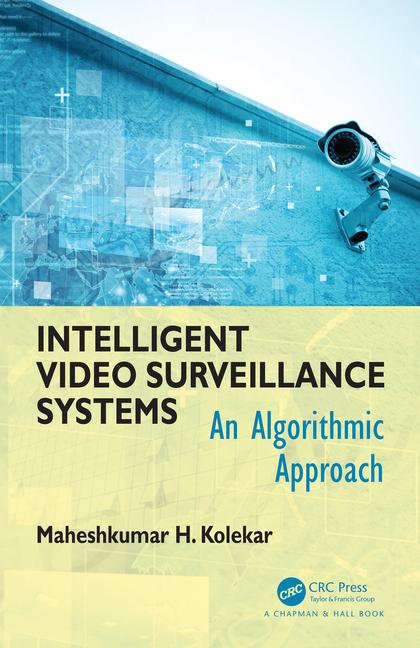From the beginning, an IP-based video management software solution from OnSSI has enabled the Orlando Police Department to create a fully featured video surveillance network that can control and record video from hundreds of cameras, now and in the future, as well as automatically display or “push” video to monitors or even hand-held devices from any camera in an alarm situation.
The Ocularis IP video management solution is an open-architecture, non-proprietary, video-centric software platform that allows viewing, management and recording of video in the Orlando system from an unlimited number of IP and non-IP video surveillance cameras. The system also allows for video storage management and can correlate and fuse video and non-video events and alerts, resulting in automatic video delivery to anyone who wants or needs to see it.
Help and Input from the Community
Funding for Orlando’s Innovative Response to Improve Safety (IRIS) video surveillance program has included a combination of federal grants and private donations. Helping to pay for the system, Urban Areas Security Initiative (UASI) grants have been provided under a Department of Homeland Security program to enhance regional preparedness in major metropolitan areas. Contributions have also come from local businesses, including help from Target stores under its Safe City Program, which endorses a combination of technology and information-sharing tools to increase communication and effectiveness in crime prevention. Corporate help has also come from the Darden restaurant group, whose businesses include LongHorn, Olive Garden and Red Lobster.
Donations and partnerships with local businesses enabled OPD to install the first 17 IP cameras in 2009 and have continued to provide key resources as the system has grown. A partnership with the MetroWest Master Homeowners association paid for installation of nine cameras in the community; cameras that are monitored by the police department.
“We have a civilian review board that is very active,” says Detective Jeffery Blye of the Regional Electronic Surveillance Support Team of the Orlando Police Department. “They meet to talk about the system and to discuss deployment and incidents that have occurred.”
“Working with businesses and leaders throughout the community really helps us to reduce the Big Brother stigma of surveillance cameras by promoting understanding of how the system works and how it is being used,” Blye adds. “This contributes to the overall success of the project. We get input not just from law enforcement personnel but from the community, which is key to the success of any citywide deployment.”
Better Images, Easily Accessible
The video system’s software can accept video from practically any camera or encoder by any leading manufacturer. This allows the system in Orlando to integrate both best-in-breed and legacy analog equipment. The versatility of the system allows Orlando and Orange County to choose cameras for their specific function rather than having to lock in on a specific brand. “We can be camera brand-agnostic, and don’t have to use a certain brand but rather, we can purchase cameras based on system needs,” says Blye.
Sony cameras are used primarily at the street level and also in the Orlando citywide department; Panasonic and Axis models are also used. Recently, OPD has sought to take advantage of higher-resolution imaging, and newer camera models provide 1280x720 HD resolution, an improvement over the 4CIF resolution (704x480 pixels) that was previously the standard.
Video from the cameras is routed to two operations centers, one at the Orange County Sheriff’s Department and another at the Orlando Police Department. The OPD operations center includes eight 46-inch LCD monitors, three 22-inch LCD touch-screen monitors and a video wall. There are two workstations for the video wall and mapping software, and the monitors and video wall display whatever video the operators want to see. Some views are of fixed locations and some show “tours” of multiple camera views.
Operators control cameras’ pan-tilt-zoom (PTZ) functionality using Ocularis. On-board PTZ controls provide more in-depth monitoring and analysis. Motion detection for push video allows live video images to be sent to a cell phone or to pop up on the monitor at the command center. There is also an option for “blank screen technology” where screens will remain blank unless there is an incident. In this way, there are fewer monitors for operators to watch, which also means less need for hands-on operators.
Seven servers with storage arrays provide capacity to store video for 30 days, and any evidence of an incident is archived. The use of H.264 compression has provided the ability to store more high-def images in the available 150 terabytes of storage for all the cameras, says Blye. The system enables the OPD to use OTS (off the shelf) computers, which means they can quickly and easily replace or add to the system as resources permit.
The system operators are sworn police officers, including officers who were injured or are on restricted duty. They monitor areas of concern at specific times of the day, work to augment the efforts of patrol officers on-site and look for activity among the various camera views based on their experience on the street.
The OPD has a proactive approach to using the technology; looking not only to react to crime but to locate crime before it occurs.
Numerous incidents have served to demonstrate the effectiveness of the system. One weekend evening, for example, a police officer monitoring a camera view in downtown Orlando was watching pedestrians loitering in an area and saw them beat and rob an intoxicated resident. The video provided a vehicle description and license plate number, which directed police to arrest the suspects. The system has also been used to foil numerous car burglaries in downtown areas and has contributed to many successful investigations.
Connected and Wireless System
The system is connected using roughly 90 percent fiber-optic cables and some wireless mesh connectivity. Mesh system technology is also used for special events, from rallies and protests to local fairs, carnivals and sporting events. Supplementing the permanently installed systems, the OPD uses a wireless mesh system, provided by Avrio Group and utilizing Firetide wireless equipment, which can be used for temporary installations.
A mobile command post includes an eight-camera system that can be deployed for a special event or in a specific area – based on crime statistics – to promote law enforcement. The video is sent wirelessly back to the OPD command center where operators can monitor the situation and control the cameras using the PTZ functions of the software.
Map overlays are used with the OnSSI graphical user interface (GUI) that shows camera locations and directions to allow fast orientation and quick action for operators. Ocularis users benefit from an interface that can easily be used by non-technical operators.
“Operators can call up maps of the city, with icons of cameras, and touch the icon to see the camera view,” says Blye. “They actually see where the cameras are located geographically throughout the city.”
To promote ease of use, the video management system features a touch screen-enabled interface complete with instant access to every camera, in any combination, powerful investigation tools and multi-operator, multi-site versatility. The system enables the citywide system to be proactive by providing tools to filter and promote understanding of video content. It is also responsive and helpful in case of an incident. Investigation tools allow police officer operators to learn easily what happened when there was any kind of crime or breach.
More Expansion Planned
Because IP-based solutions open the door for linking systems and areas, Orlando schools, condo residences, shopping malls and any other facilities that have IP-based video surveillance systems can also be tied into the video management system. The software allows an unlimited number of cameras to be supported and features open architecture to ease system integration.
Once funding is finalized, Agent Vi video analytics with the ability to read license plates will be incorporated into the system.
East of downtown Orlando, 20 cameras have also recently been installed at the Orlando Police department’s gun range. The range has 55 lanes divided into three training bays, and two cameras are positioned per bay with other cameras installed at various locations for general risk management. When cabling is complete, the system will be monitored locally on-site, and plans are to eventually incorporate it into the larger system.








